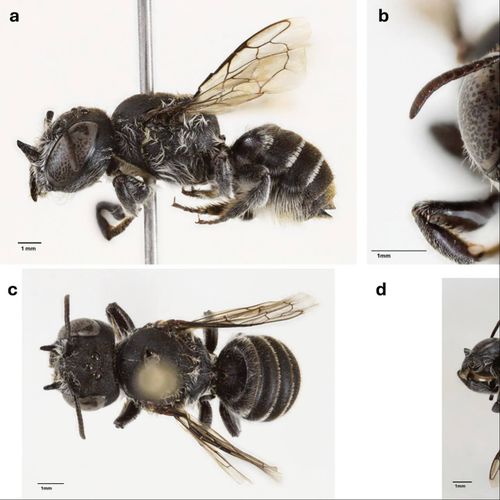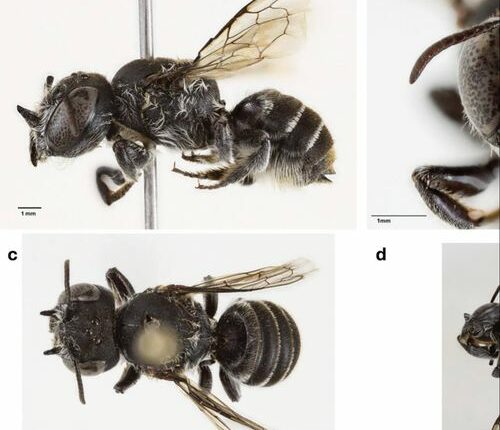Share this @internewscast.com
While conducting a survey of pollinators visiting the Marianthus aquilonaris wildflower in the secluded Bremer Range within Western Australia’s Goldfields, native bee expert and Curtin University Adjunct Research Fellow Kit Prendergast made an unexpected discovery: a bee species unknown to science.
Prendergast has named this newfound female species Megachile (Hackeriapis) lucifer, inspired by her favorite show on Netflix, due to the insect’s distinct horn-like features.

“Many endangered plants lack even basic knowledge about their pollinators,” Prendergast noted. “For numerous mining and development initiatives, there is often no mandate to survey, much less address or compensate for potential effects on native bee populations and other invertebrates.”
She added, “The name ‘lucifer’ not only alludes to the character Lucifer but also translates to ‘Lightbringer’ in Latin. I hope this new species brings attention to the urgent need for investment, monitoring, and research into the conservation of Australian native bees.”
The discovery of Megachile (Hackeriapis) lucifer marks the first identification of a new species in its genus in two decades.
The Megachile (Hackeriapis) lucifer bee is the first of its genus to be discovered in 20 years.
Australia is home to an estimated 2000 native bee species.










